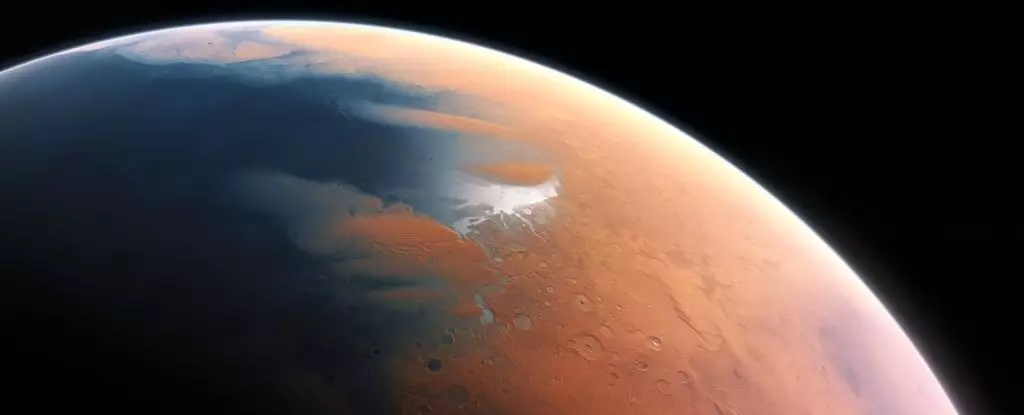The recent analysis of seismic data collected by the Mars InSight lander has revealed the presence of huge reservoirs of liquid water hidden deep within the Martian interior. While this discovery sheds light on the mysterious aquatic history of Mars, it also presents a significant challenge due to the inaccessibility of the water. Geophysicist Vashan Wright emphasizes the importance of understanding the Martian water cycle in order to comprehend the evolution of the planet’s climate, surface, and interior. This research serves as a critical starting point for identifying the distribution and quantity of water on Mars.
As rovers explore the surface of Mars and gather data on its geology, the evidence of a water-rich past becomes increasingly compelling. The presence of minerals, dry lake beds, and deltas suggests that Mars was once saturated with water. However, the water on Mars today exists primarily as ice, and in quantities insufficient to explain the planet’s watery history. Understanding the fate of the Martian water is crucial for estimating the amount that could have existed billions of years ago. Two possible scenarios involve the water either escaping into space or seeping into the Martian interior.
The Mars InSight lander played a crucial role in uncovering the deep-seated reservoirs of liquid water on Mars. By analyzing seismic data collected over several years, scientists were able to infer the existence of a layer of fractured igneous rock filled with liquid water beneath the Martian surface. This discovery, located at depths ranging from 11.5 to 20 kilometers, provides valuable insights into Mars’ water cycle and potential habitability. Geophysicist Michael Manga highlights the significance of the underground reservoir as a potentially habitable environment with implications for the presence of life.
Despite the exciting discoveries made by the Mars InSight mission, there are still many unknowns regarding Mars’ water reserves. Previous findings raised questions about the existence of water reservoirs below the Martian surface, while recent data indicates limited water ice in the upper crust near the lander’s location. However, if the water-rich layer detected deeper underground is widespread across Mars, it could account for ancient oceans on the planet. Further exploration and analysis of Mars’ crust are needed to confirm these findings and uncover the secrets hidden beneath the dusty surface.
The revelation of hidden oceans on Mars opens up a new chapter in our understanding of the red planet’s watery past and potential for life. While the challenges of accessing these underground reservoirs remain, the insights gained from the InSight mission offer a glimpse into Mars’ mysterious water cycle. As we continue to unravel the secrets of Mars, new opportunities for exploration and discovery await us on our neighboring planet.


Leave a Reply